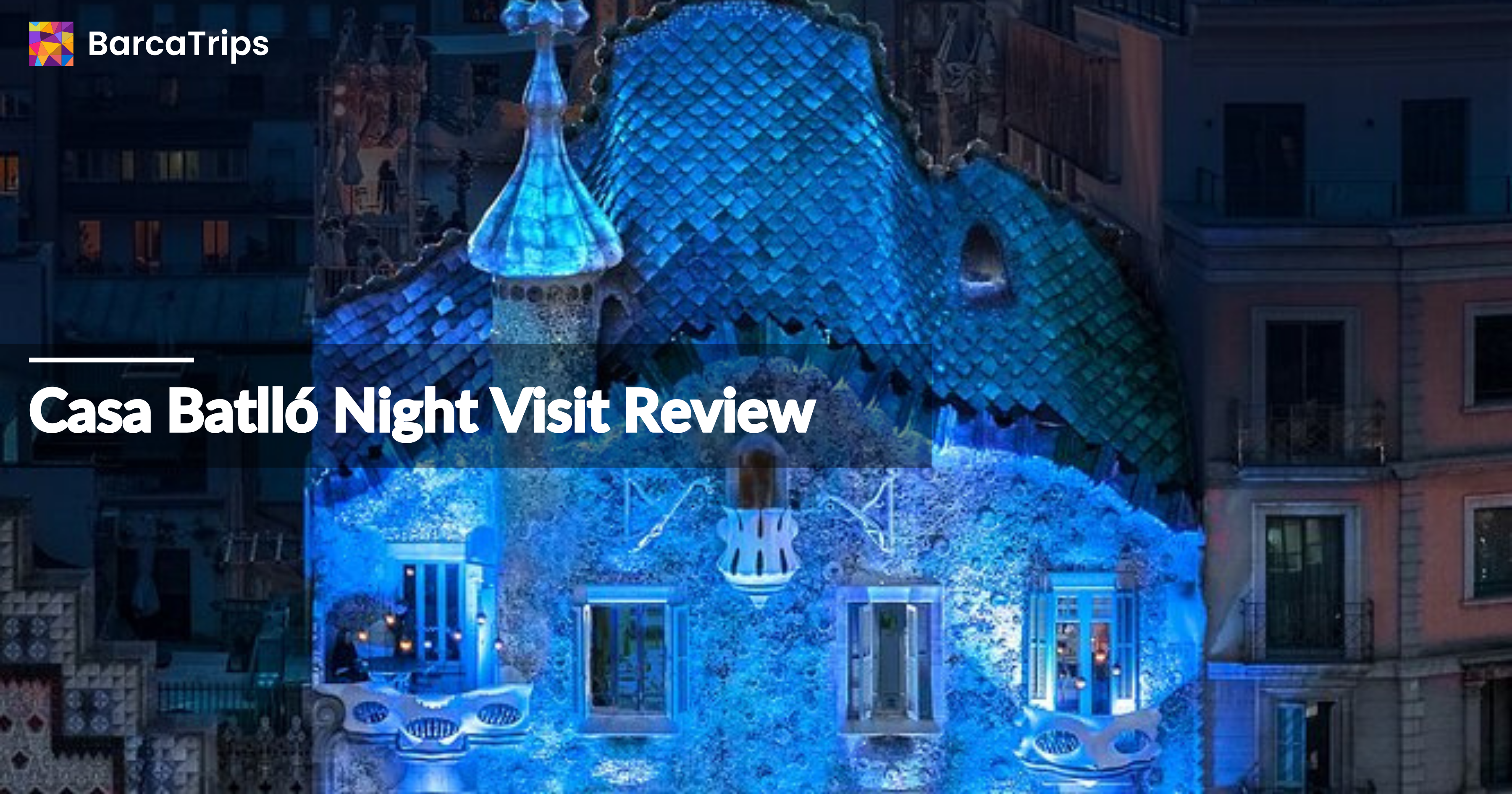10 Must-See Buildings of Antoni Gaudi - The History Behind Them

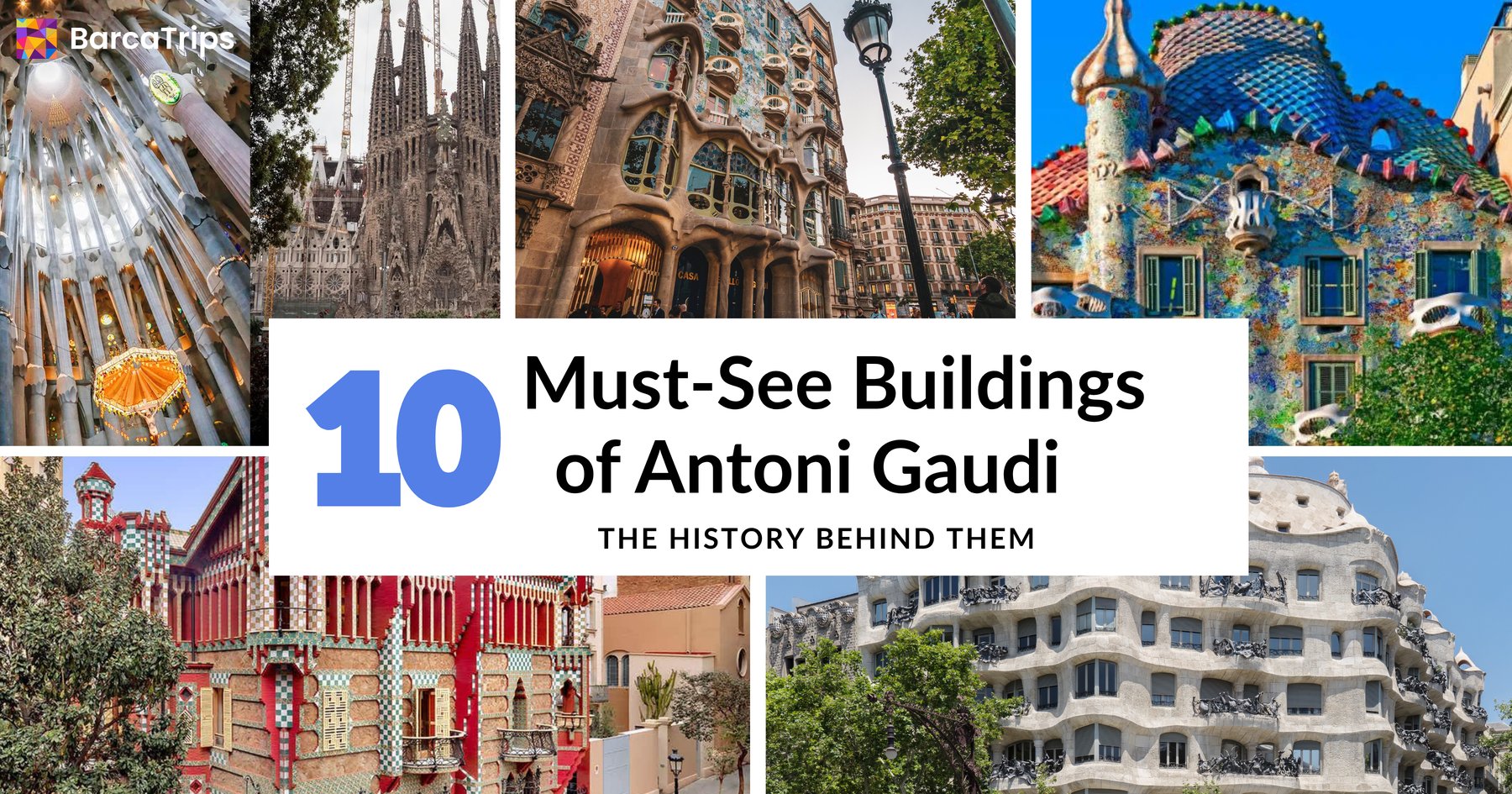
Antoni Gaudí is one of the most famous architects in the world and his work has shaped the city of Barcelona like no other. He was known for his creative and unique designs that blend nature, imagination, and innovation. Each building he created is both beautiful and functional.
His works are instantly recognizable - colorful mosaics and flowing, organic shapes. They are full of character and charm. Whether you love art, enjoy history, or are simply curious, you just can't leave Barcelona without seeing Gaudí’s buildings.
Who Was Antoni Gaudí? - A Little Bit of History
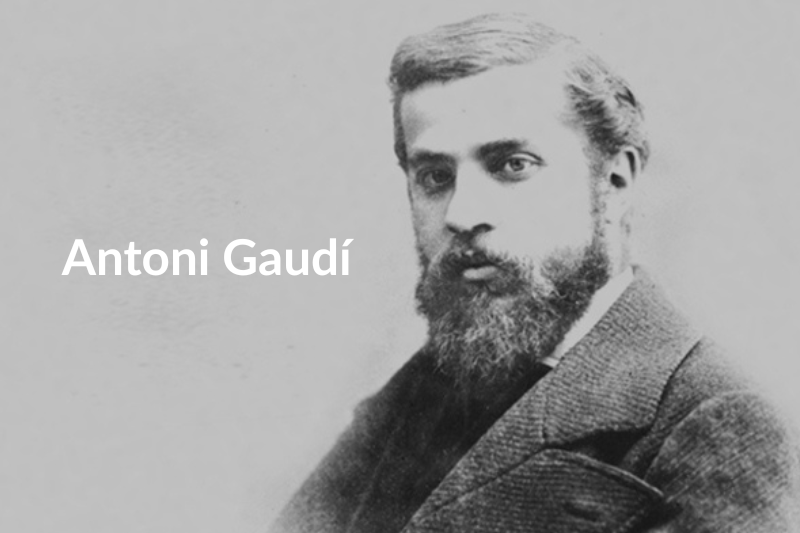
Antoni Gaudí was a visionary Catalan architect whose work has become synonymous with Barcelona's architectural identity. He was born on June 25, 1852, in Reus, Spain. He later moved to Barcelona, where he left an indelible mark on the city's landscape. Gaudí's designs are celebrated for their distinctive blend of Gothic and Art Nouveau styles. It was characterized by organic forms, vibrant colors, and intricate details.
One of his most renowned projects is the Sagrada Família, a basilica that remains unfinished to this day. Gaudí dedicated a significant portion of his life to this monumental work, which has become a symbol of his architectural genius. His other notable creations include Park Güell, Casa Batlló, and Casa Milà.
Tragically, Gaudí's life was cut short when he was struck by a tram in Barcelona on June 7, 1926. Due to his modest appearance at the time of the accident, he was mistaken for a beggar and did not receive immediate medical attention. He succumbed to his injuries three days later, on June 10, 1926. Despite his untimely death, Gaudí's legacy endures through his architectural masterpieces, which continue to inspire and captivate people worldwide.
Gaudí’s Architectural Style
Antoni Gaudí’s architecture stands out for its creativity, attention to detail, and connection to nature. His works are timeless because they can combine beauty with functionality.
1. Organic Shapes Inspired by Nature
Gaudí often looked to nature for inspiration. His buildings include elements like columns resembling trees, flowing lines, and intricate patterns that mimic flowers and other natural forms. This approach makes his works feel alive and connected to their surroundings.
2. Use of Geometry
He used advanced geometric forms like hyperboloids, paraboloids, and helicoids to shape his structures. These not only added visual appeal but also strengthened the buildings. His innovative designs can stand out even today.
3. Colors and Mosaics
Gaudí was known for his love of color. He used ceramic mosaics, a technique called trencadís, to create colorful, textured surfaces. By piecing together broken tiles, he turned walls and sculptures into vibrant, eye-catching art.
4. Art and Craft
Gaudí didn’t just design buildings—he brought together various art forms like ceramics, stained glass, ironwork, and carpentry. This created a unified and artistic look where even the smallest details were thoughtfully designed.
5. Smart Structural Solutions
His work included clever innovations, like catenary arches and tilted columns, which improved the stability of his buildings. These techniques also allowed for open, spacious interiors without the need for many supports.
6. Religious Themes and Symbolism
Gaudí’s deep Catholic faith influenced much of his work. Many of his designs include religious symbols and stories, especially in the Sagrada Família, where every detail has a spiritual meaning.
His buildings are a piece of art that also tells a story. He was able to mix traditions with innovation and created masterpieces. Now, let’s see his works!
1. Sagrada Família

The Sagrada Família is one of the most iconic landmarks in Barcelona and a must-see for anyone visiting the city. This basilica is a stunning mix of art, architecture, and spirituality.
Construction began in 1882, and Gaudí took over the project in 1883. He devoted the last years of his life entirely to it, creating a design that reflected his deep faith and love of nature. The basilica features intricate facades, soaring towers, and a breathtaking interior illuminated by colorful stained glass. Each element is rich with symbolism, from the Nativity Façade which celebrates life to the Passion Façade which depicts the suffering of Christ.
Even though it’s unfinished, the Sagrada Família is already a UNESCO World Heritage Site and continues to inspire millions of visitors each year. With its unique design and fascinating details, it’s more than a church—it’s a work of art.
Make sure to book tickets in advance to avoid long lines and take a moment to admire the panoramic views from one of the towers. Visiting the Sagrada Família is an experience you’ll never forget.
2. Park Güell
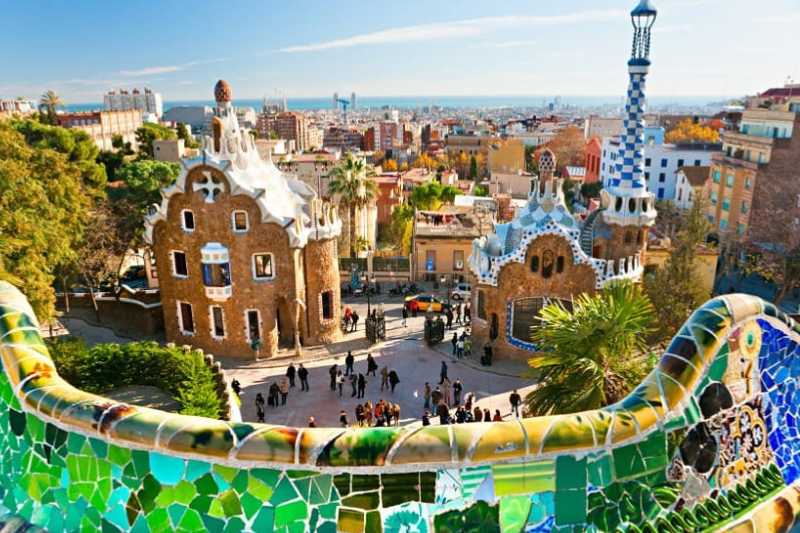
Park Güell is a place where Antoni Gaudí’s creativity comes alive. It’s perched on a hill overlooking Barcelona and combines stunning architecture with lush greenery. It was originally planned as a residential community by Gaudí and his patron Eusebi Güell. But, the project was never finished. Today, it’s a public park and one of Barcelona’s most popular landmarks.
Inside the park, you’ll find winding pathways, colorful mosaics, and playful sculptures. You should pay attention to famous dragon fountain at the entrance and the curving bench on the main terrace. Gaudí used his unique trencadís technique and create intricate patterns from broken tiles that add charm and detail to the space.
The park also includes Gaudí’s former home, now a museum filled with personal artifacts and insights into his work. As you explore, you’ll notice how his designs are inspired by nature and blend seamlessly with the surrounding landscape.
3. Casa Batlló
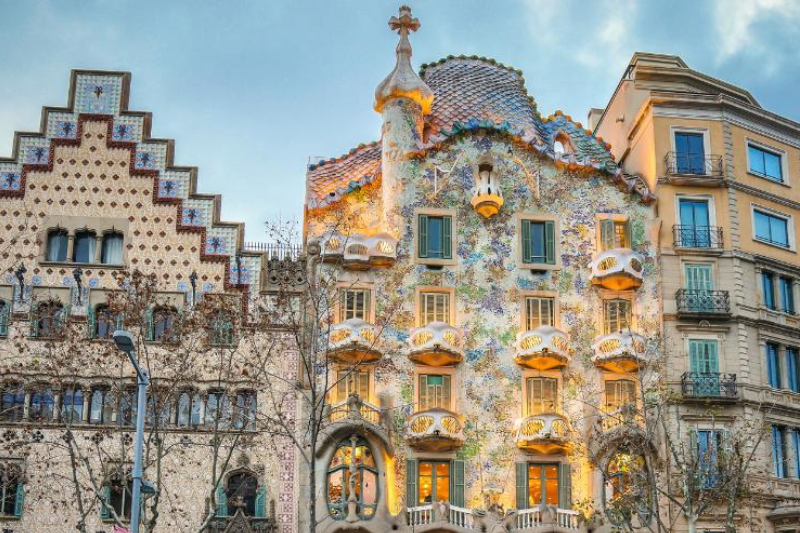
Casa Batlló is one of Antoni Gaudí’s most creative and imaginative works. It’s located on the famous Passeig de Gràcia, right in the heart of Barcelona. It was originally a traditional townhouse, but Gaudí transformed it in 1904 into a surreal masterpiece that defies convention.
The building’s façade is like a living canvas, with curved lines, bone-like balconies, and colorful tiles inspired by natural coral. Its roof, often compared to a dragon’s back, is one of its most iconic features. Inside, you’ll find flowing designs, stained glass windows, and innovative details that make the space feel almost alive.
Every part of Casa Batlló reflects Gaudí’s inspiration from nature and his ability to create something entirely unique. It’s more than a building—it’s an experience that captures your imagination.
If you plan to visit, consider the evening light shows or immersive tours that bring the house’s history and artistry to life. Casa Batlló is a must-see for anyone looking to discover Gaudí’s genius.
4. Casa Milà
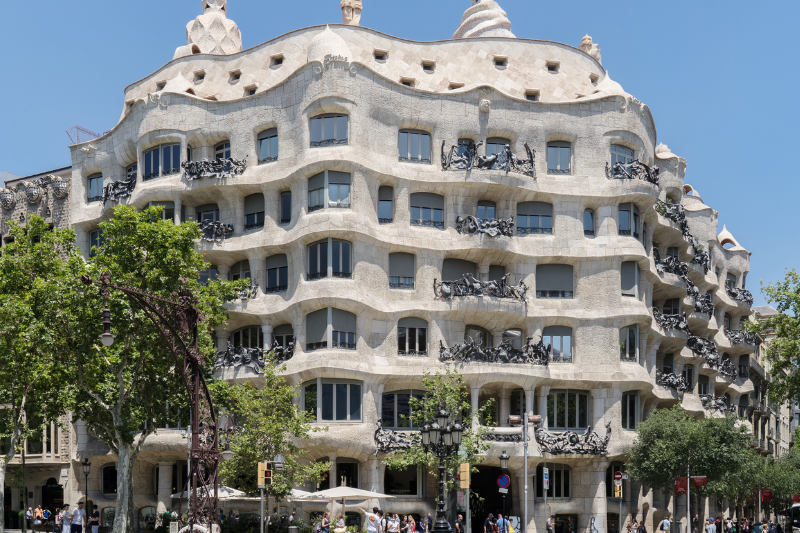
Casa Milà, also known as La Pedrera, is one of Antoni Gaudí’s most innovative creations. It’s located in Passeig de Gràcia and is famous for its bold, modern design. It was build between 1906 and 1912 and was actually commissioned by the wealthy Milà family. However, it quickly became a symbol of Gaudí’s architectural brilliance.
The building’s undulating stone façade looks like flowing waves, while its wrought-iron balconies and windows resemble vines and natural forms. On the rooftop, you’ll find surreal sculptures, including chimneys and ventilation towers that look like works of art. The attic, designed with catenary arches, houses an interactive museum about Gaudí’s life and work.
Gaudí’s use of open-plan designs and natural light made Casa Milà far ahead of its time. The building is not only functional but also a striking representation of his ability to merge structure with artistry.
Visitors can explore the rooftop, apartments, and exhibitions to fully appreciate this UNESCO World Heritage Site. Casa Milà is a must-visit for anyone fascinated by architecture or looking to experience Gaudí’s groundbreaking style firsthand.
5. Casa Vicens
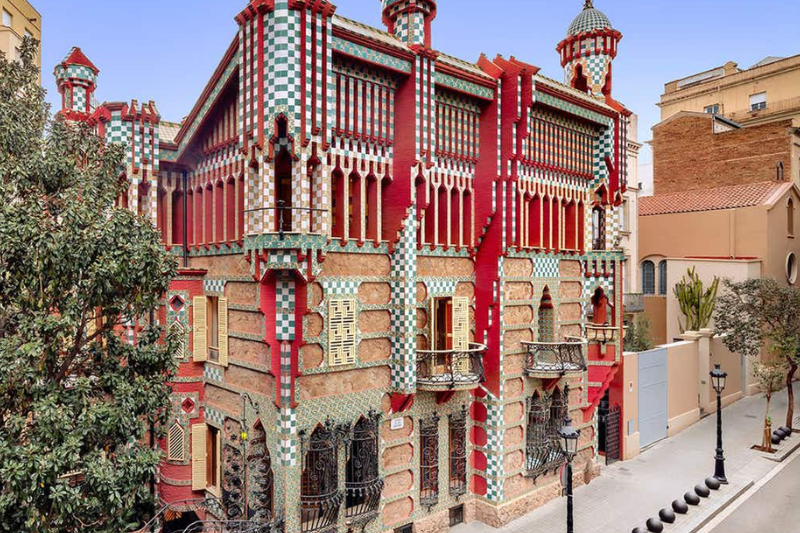
Casa Vicens is Antoni Gaudí’s first major project and a stunning introduction to his unique style. Built between 1883 and 1885, it was commissioned as a summer house for the Vicens family and is located in the Gràcia neighborhood of Barcelona.
This building stands out with its bold use of colors, intricate patterns, and influences from Moorish and oriental architecture. The façade has bright ceramic tiles, wrought iron details, and naturalistic motifs. It shows Gaudí’s early exploration of mixing textures and materials. Inside, the rooms are filled with rich details, including hand-painted ceilings and decorative elements inspired by nature.
Casa Vicens marks the beginning of Gaudí’s journey toward becoming one of the most innovative architects in history. Though it reflects a more traditional style compared to his later works, the building already shows his talent for blending structure and artistry.
Today, Casa Vicens is open to the public as a museum where visitors can learn about Gaudí’s early career and enjoy its beautifully restored interiors. It’s a must-see for anyone curious about where Gaudí’s genius began.
6. Palau Güell

Palau Güell is another one of Antoni Gaudí’s earlier masterpieces. With this design, he showed his ability to combine grandeur with innovation. It was built between 1886 and 1888 and this urban palace was designed for Gaudí’s patron, Eusebi Güell. It is located near La Rambla.
The building’s exterior may seem restrained compared to Gaudí’s later works, but the true magic lies inside. The central hall features a stunning parabolic dome that allows natural light to flood the space. It creates an airy and elegant atmosphere. Each room is richly decorated with detailed woodwork, intricate iron designs, and vibrant stained glass.
On the rooftop, visitors are treated to one of Gaudí’s signature features: sculptural chimneys covered in colorful mosaics. These playful designs contrast with the more formal interior and offer a hint of Gaudí’s evolving style.
Palau Güell is a UNESCO World Heritage Site and an essential stop for those wanting to explore Gaudí’s early architectural genius. Its combination of opulence and creativity makes it an unforgettable experience for visitors.
7. Colònia Güell Crypt
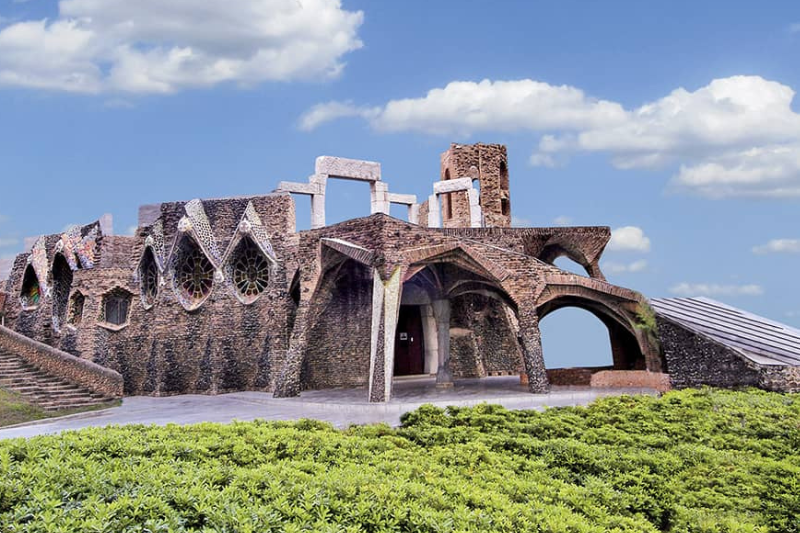
The Colònia Güell Crypt is one of Antoni Gaudí’s most creative works and a place where he tested new ideas in architecture. It’s located in the village of Santa Coloma de Cervelló, just outside Barcelona. It was commissioned by his patron, Eusebi Güell, as part of a workers’ colony.
The crypt stands out for its slanted columns and parabolic arches, which give it a natural, flowing look while also making it very strong. Gaudí used different materials like brick, basalt, and stained glass to create a design that feels connected to the surrounding landscape.
Although the larger church was never built, the crypt itself became an important part of Gaudí’s legacy. It was like a testing ground for ideas he later used in the Sagrada Família.
Today, visitors can explore this quiet and fascinating UNESCO World Heritage Site. It’s perfect for anyone who wants to see how Gaudí’s innovative style developed over time.
8. Torre Bellesguard
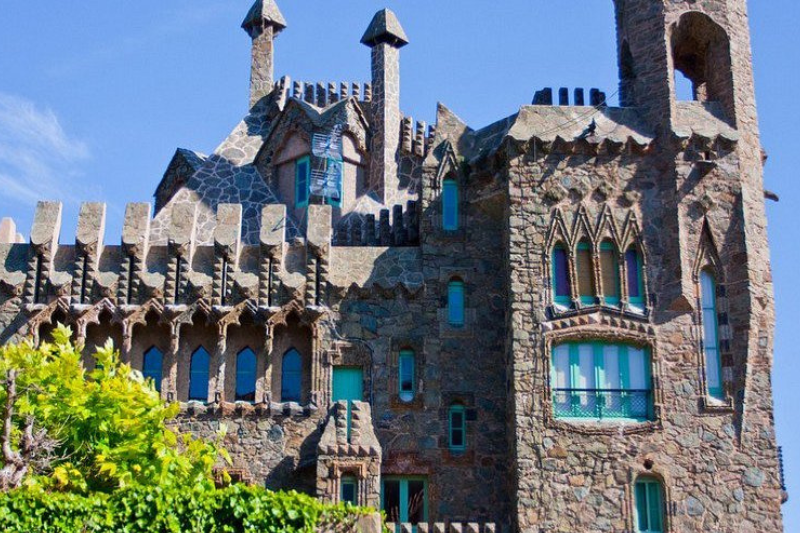
Torre Bellesguard is one of Antoni Gaudí’s lesser-known works, but it’s a fascinating mix of history, symbolism, and creativity. Built between 1900 and 1909, it’s located in the northern part of Barcelona, in a spot with deep historical significance. The site was once home to a medieval castle where King Martin of Aragon lived, and Gaudí’s design reflects this history.
The building combines Gothic elements with Gaudí’s modernist touch. Its tall, pointed spire and castle-like features give it a medieval feel, while the colorful mosaics and intricate details show his signature style. Inside, you’ll find bright, airy spaces with plenty of natural light, thanks to Gaudí’s clever use of windows and layout.
Torre Bellesguard is surrounded by gardens and you can see amazing views of Barcelona. It’s a quieter attraction, so you can explore it without crowds. This hidden gem is perfect for history lovers and architecture fans alike.
9. Casa Calvet
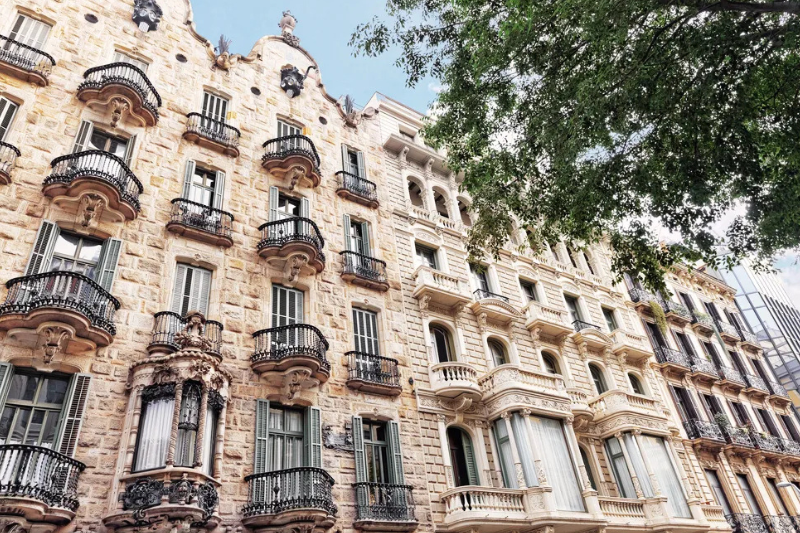
Casa Calvet is one of Antoni Gaudí’s earlier works, known for its more traditional appearance compared to his later, more daring designs. It was built between 1898 and 1900 and is located on Carrer de Casp. It was commissioned by the Calvet family, who were textile manufacturers.
The building combines classical elements with Gaudí’s attention to detail. Its symmetrical façade features elegant stonework, wrought iron balconies, and playful decorative touches, such as mushroom-like shapes that represent nature. Inside, Gaudí designed functional yet beautiful spaces, with creative furniture and artistic details that reflect his craftsmanship.
Casa Calvet earned Gaudí an award from the Barcelona City Council as the best building of 1900. While it doesn’t have the bold curves or vibrant mosaics seen in his later works, it still shows his ability to blend practicality with artistic flair.
Though not as famous as other Gaudí landmarks, Casa Calvet is a must-see for those interested in his early career. It’s also home to a restaurant, so visitors can enjoy its stunning interior while dining.
10. Colegio Teresiano
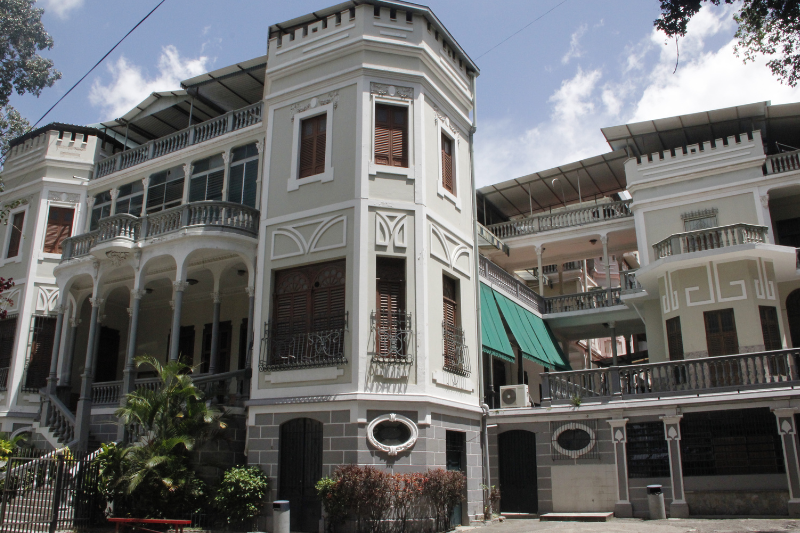
Colegio Teresiano, also known as the Teresian School, is one of Antoni Gaudí’s more modest works, yet it beautifully showcases his ability to combine functionality with symbolism. Built between 1888 and 1890, the school is located in the Sant Gervasi neighborhood of Barcelona. It was commissioned by the religious order of Saint Teresa of Jesus.
The building features a Gothic Revival style with simple yet striking details. Gaudí used brick and stone to create a structure that feels solid and grounded, while incorporating religious symbols like crosses and the anagram of Christ into its design. Inside, the central corridors are lit by natural light. This creates a calm and uplifting atmosphere.
Gaudí worked within a tight budget for this project, but his creativity shines through in the use of parabolic arches and careful attention to detail. The result is a building that is both practical as a school and deeply spiritual in its design.
While less famous than Gaudí’s larger projects, Colegio Teresiano is a hidden gem for those interested in his ability to balance simplicity with meaning. It’s a quiet yet inspiring example of his architectural skill.
What to Know Before Visiting?
1. Prices
Visiting Gaudí’s iconic buildings often comes with entry fees. On average, tickets range from €10 to €30 per site. For example, Sagrada Família tickets start at around €26, while Park Güell costs about €10. Some tour companies have bundle packages that include multiple Gaudí landmarks, which can be a convenient and cost-effective option. Alternatively, the Barcelona Pass includes access to several attractions and can help you save money if you’re planning to visit multiple sites.
2. Dress Code and Behavior
Many of Gaudí’s sites, such as the Sagrada Família, are religious spaces, so it’s important to dress modestly. Avoid wearing clothing that is too revealing, like tank tops or short shorts, especially when visiting the basilica. Carrying a scarf or light jacket is a good idea to cover up if needed.
Be mindful of other visitors by keeping noise levels low, especially in sacred spaces. Avoid touching exhibits or leaning on delicate structures to help preserve these historical landmarks for future generations. Always follow the rules and guidelines provided at each site to ensure a respectful and enjoyable visit.
3. Where and How to Take Pictures
Photography is generally allowed at Gaudí’s sites, but there are a few rules to keep in mind. Flash photography is often prohibited, especially indoors, to protect delicate artworks and materials. For example, avoid using flash inside the Sagrada Família or Casa Batlló. Always check signage or ask staff if you’re unsure about photography policies.
Conclusion
Gaudí’s architecture is truly a feast for the eyes. Each site gives you a unique glimpse into his genius. No surprise that these sights are an unforgettable part of any Barcelona trip.
Many of Gaudí’s works are conveniently located near each other, especially in central areas like Passeig de Gràcia. Sites like Casa Batlló, Casa Milà, and the Sagrada Família are easily reachable within a short distance. Others, like Park Güell and Colònia Güell, are a bit farther but still accessible.
Barcelona’s public transport is efficient and reliable, with metro lines, buses, and trams connecting all major landmarks. The TMB metro network is especially useful, with stations close to most Gaudí attractions. Consider getting a travel pass, like the Hola BCN card, to save money and time. Whether you visit one or all of these stunning sites, Gaudí’s work will leave a lasting impression.

